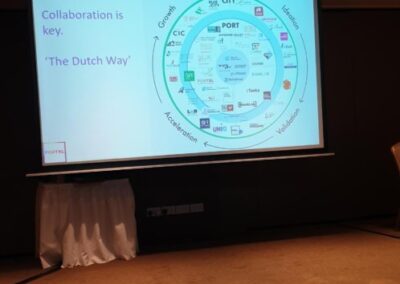On 19th of February, the Cyprus Shipping Chamber monthly members meeting was held at Amathus Beach Hotel in Limassol. As usually, the meeting was chaired by Mr. Andreas Neophytou, the Chamber’s vice President. The Chairman presented monthly report on Chamber’s activities. Members received further update on the tonnage tax law. Present the amended bill is under procedure in Finance Committee of the House of Representatives. The Chamber ensured that till end of February, the bill should be signed by the President.
For this meeting there was a presentation Mr. Cees-Willem Koorneef, Director of PORTXL, entitled: “Smart and fast innovation in Ports and Shipping”. PortXL is the world’s first Maritime Port Accelerator and is unique in its kind, with a global network of leading companies and experts. The objective of PortXL is the acceleration of innovative technologies for the maritime, logistics, energy and chemical industry sectors in port regions across the world. In doing so, PortXL activates the largest possible ecosystem to stimulate entrepreneurship for all involved parties. The PortXL ecosystem comprises start-ups and scale-ups, investors and partners, and market leading companies such as Van Oord, Port of Rotterdam, EY, Royal IHC, Mammoet, Vopak, Boskalis, Shell, Rabobank, City of Rotterdam, Ampelmann, North Sea Port, InnovationQuarter and ECE.
For more information please visit PORTXL website.




